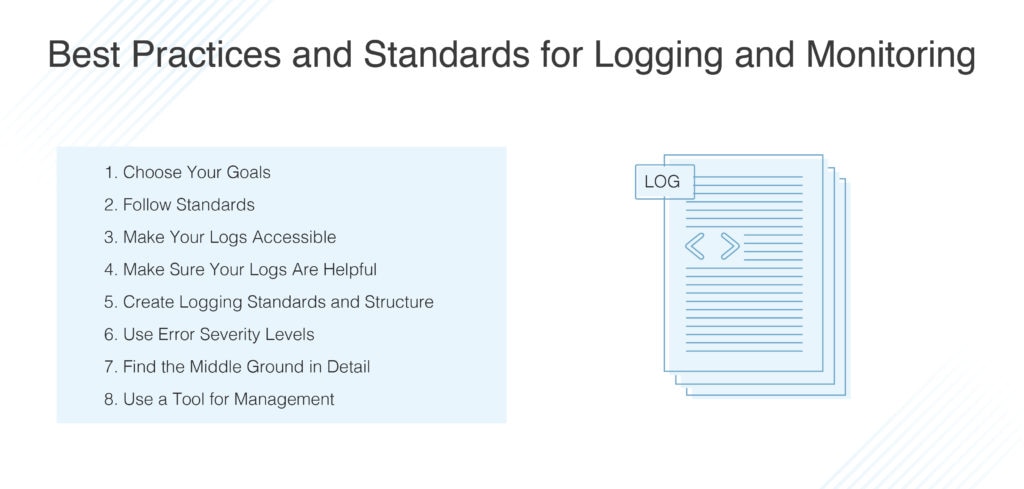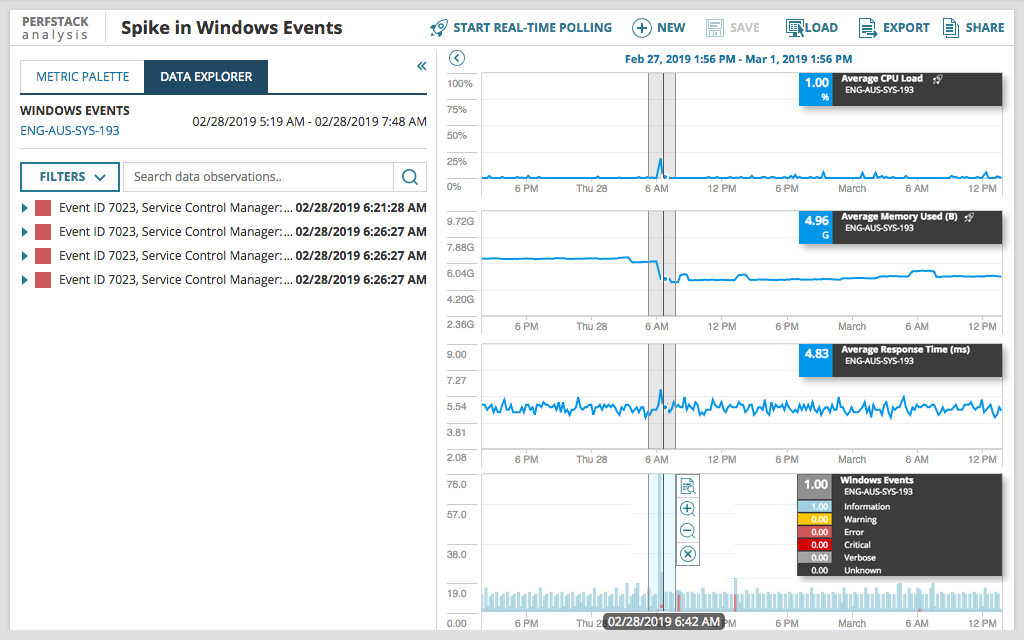In a world with data flowing constantly through our devices, efficient logging practices have become a fundamental tool for modern businesses. By using logging best practices, logging data can give your business valuable insights, and you can use these logs and the information they hold for several purposes. With efficient logging tools and best practices, you can go beyond troubleshooting to help your business through auditing, profiling, and creating statistics for growth.

But what logging standards should you follow to get the most out of your logs? Here are eight logging and monitoring best practices to translate your system’s data into useful information. I recommend you look into helpful tools such as SolarWinds® Log Analyzer designed to help you examine and analyze your logs in the most efficient and effective way.
1. Choose Your Goals
While logging practices are necessary to keep your network healthy and running, you can also use them for statistics or profiling. Whatever you want to use your logs for, you need to ensure these goals are set beforehand. You can then use these goals as a guideline when making decisions for the rest of your logging and monitoring best practices and when defining logging standards for your entire organization.
2. Follow Standards
A good way to begin is to use what has already been standardized for you. Use a standard logging framework instead of attempting to read and analyze individual logs manually. This gives you built-in features to work with to control the amount of detail included in logs, define severity levels of alerts, or implement log rotation policies, while also providing community support for troubleshooting. When you follow standards for log monitoring and creation, you’ll find your job becomes a lot easier.
3. Make Your Logs Accessible
All logging practices have a double audience of both machines and human users. Computers are quick and efficient at dealing with large amounts of structured data, while humans cannot process or sort through the large amounts of data that come through the logging process. On the other hand, people have the advantage of being able to interpret unstructured data well, which can help you to spot issues easily (with the right tools). Logging practices to ensure your log messages can be read and used effectively by your IT team include:
- Choose a standard format for date and time
- Ensure they have timestamps in local time (or UTC) + offset
- Make sure log levels are configured correctly
- Give logs context where possible
4. Make Sure Your Logs Are Helpful
Log messages are often the only tool available in emergency situations to understand what happened to the system, so you can effectively troubleshoot. Always make sure you understand what the log messages apply to and which part of your network has been affected, separate from the code or other messages. If possible, keep a record of potential troubleshooting information related to each part of your network, so when a problem occurs, you already know the purpose of the device or application and what the log message will mean for your end users.
5. Create Logging Standards and Structure
One of the best strategies for optimizing your logging practices is to create logging standards, so all the logs you receive follow a consistent structure. Ensure all logs show the timestamp and the names of the host and logger. Other valuable information can include event or user ID, application version, and metrics. Finally, you can add unique tags or IDs to log lines, making it easy to track errors or see when repeated instances of the same event have occurred.
6. Use Error Severity Levels
Not all events are equally important for troubleshooting or network monitoring, and being able to differentiate severe ones from irregular or normal logs is critical. Logging levels should be a part of all logs for all devices, including statements such as FATAL, ERROR, WARN, INFO, DEBUG, TRACE, ALL, or OFF. If logs have been configured without these messages, this will need to be quickly remedied.
7. Find the Middle Ground in Detail
When configuring what kind of information your logs provide, you need to find the middle ground in the amount of detail your log messages show. Even with a tool in place, if your log messages are showing too little or too much information, you can quickly get overwhelmed or miss something serious. Logs should give you enough information to troubleshoot the issue, but not so much information that you can’t quickly see what is happening in a broad sense.
8. Use a Tool for Management
Even when following all best practices, logging and monitoring remain extremely difficult tasks, especially for larger networks and databases. During an emergency, going manually through logs will be inefficient, slow, and stressful. I recommend using an appropriate tool to make your job easy. Using logging monitoring and analysis tools, you can reduce data volume, normalize logs from different sources, and make the entire process faster and more accurate. Any tool you use should be able to:
- Manage critical logging data
- Provide a way to search and filter through your log messages
- Aggregate and centralize all your logs in one location
- Display your log messages in an easy-to-understand UI
I recommend using SolarWinds Log Analyzer, an all-in-one log management tool built to continuously monitor logging data and to aggregate and consolidate it in one place. It also features a powerful search tool and intuitive, out-of-the-box filters to make finding log entries fast and easy. Finally, an interactive chart allows you to quickly visualize volume, search results, and refine timeframes of aggregated log files. These features can help you troubleshoot quickly and ensure problems are fixed before they affect your end users. A 30-day trial is also available, if you want to try it out.

Key Points to Remember
By following logging and monitoring best practices, the enormous amount of data produced by your network and devices can become a useful tool for troubleshooting and other business purposes. Carefully configuring and reading your log messages, and efficient monitoring, are steps in the right direction. To get the most out of logging data in the most efficient and effective way, you should rely on log management tools such as SolarWinds Log Analyzer.
